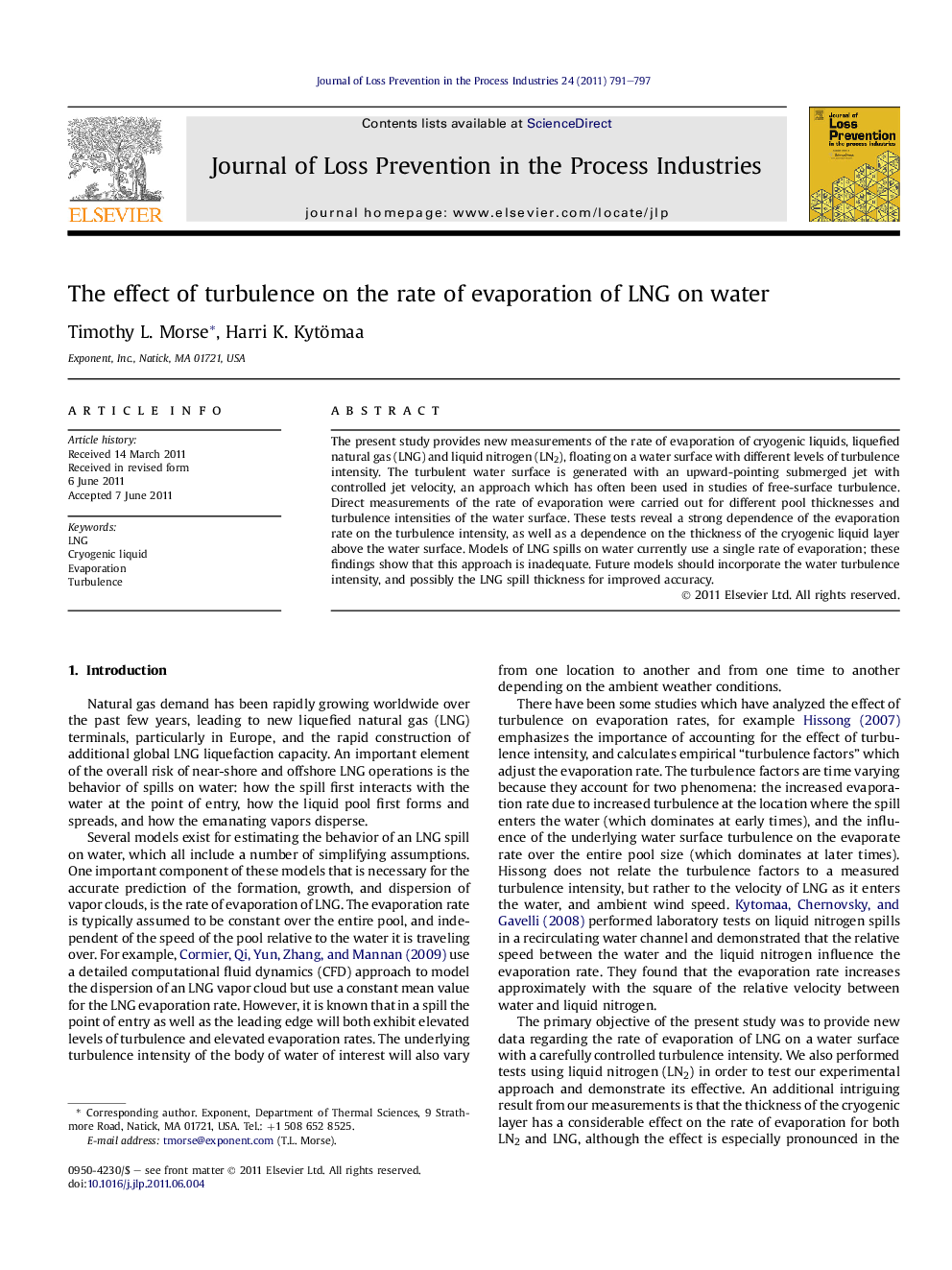| کد مقاله | کد نشریه | سال انتشار | مقاله انگلیسی | نسخه تمام متن |
|---|---|---|---|---|
| 586983 | 878244 | 2011 | 7 صفحه PDF | دانلود رایگان |

The present study provides new measurements of the rate of evaporation of cryogenic liquids, liquefied natural gas (LNG) and liquid nitrogen (LN2), floating on a water surface with different levels of turbulence intensity. The turbulent water surface is generated with an upward-pointing submerged jet with controlled jet velocity, an approach which has often been used in studies of free-surface turbulence. Direct measurements of the rate of evaporation were carried out for different pool thicknesses and turbulence intensities of the water surface. These tests reveal a strong dependence of the evaporation rate on the turbulence intensity, as well as a dependence on the thickness of the cryogenic liquid layer above the water surface. Models of LNG spills on water currently use a single rate of evaporation; these findings show that this approach is inadequate. Future models should incorporate the water turbulence intensity, and possibly the LNG spill thickness for improved accuracy.
► The evaporation rate of LNG spilled on water depends on the turbulence intensity.
► We characterize this dependence through experimental measurements.
► We find that the LNG layer thickness also influences the evaporation rate.
► Models of LNG spills should incorporate the water turbulence intensity.
Journal: Journal of Loss Prevention in the Process Industries - Volume 24, Issue 6, November 2011, Pages 791–797